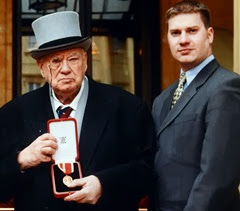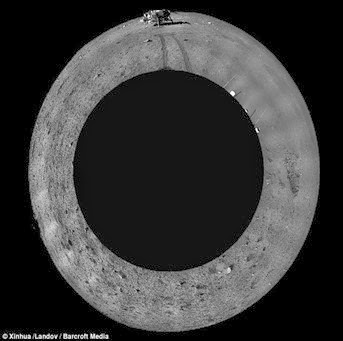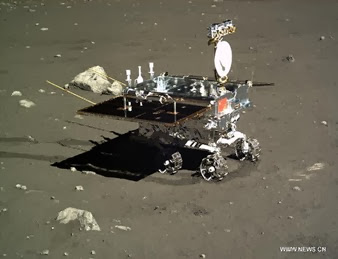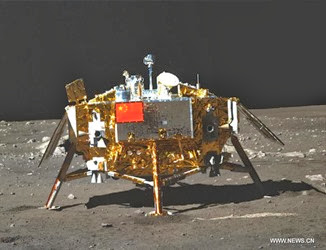15 Jan 2014
Three-storey Sky Whale fits 755 passengers, has virtual reality windows and self-healing wings | Mail Online
Reminds me of Thunderbird 2 & Star trek ! Its such a nice futuristic design
14 Jan 2014
January 2014 | China Lands on the Moon
Viewing figures | Dec 29 2013 – Jan 14 2014 10,200 with likes from UK, Russia & USA
There has been a rollercoaster of Chinese emotions over the last month.
The atmosphere was tense upon the launch of Chang’e 3 on December 1st, then as the Moon probe entered into Luna orbit China lost two expensive satellites, so the atmosphere again was very tense during the Luna landing. Fortunately all went well, the Chang’e 3 & Jade Rabbit instruments work fine, so the so the science can begin proper from January 10th.
In this program we examine the mission in detail from launch, and what we know about the landing site from previous spacecraft. If you would like to contact me my Email address is Richard.pearson53@yahoo.co.uk Please follow me on Twitter @Richard91113095
First APXS (Infrared) Spectrum of Luna soil
Please share this program with your friends by Email, Face-book & Twitter. The next program will be available from January 31st so please make a note in your diary; thank you for watching.
Richard Pearson
13 Jan 2014
Altair Astro
Astronomical Telescopes & Supplies for the Amateur Astronomer, all at affordable prices
12 Jan 2014
11 Jan 2014
New Chang’e 3 Images released by China
New images released on Friday 10th January showing the Change’e 3 lander and Jade Rabbit on the Moon. Click on any of the images to enlarge. The last image was taken of the Earth on December 25th in UV. The earth was 83.7% illuminated and has an angular size of 2 degrees of arc in the Luna sky.
China scientists working on the project say they had a lot of help from NASA and designed Jade Rabbit from plans of NASAs Mars rover vehicles that are now successfully exploring the Red planet.
5 Jan 2014
BBC News - New Sky At Night presenter Dr Maggie Aderin-Pocock 'confused with tea lady'
 BBC News - New Sky At Night presenter Dr Maggie Aderin-Pocock 'confused with tea lady'
BBC News - New Sky At Night presenter Dr Maggie Aderin-Pocock 'confused with tea lady'
The Sky at Night returns early next month in a new 30 minute slot on BBC 4. The show will be available soon after on the BBC I-player catch-up service.
31 Dec 2013
28 Dec 2013
China’s Luna Mission programme 2004 - 2013
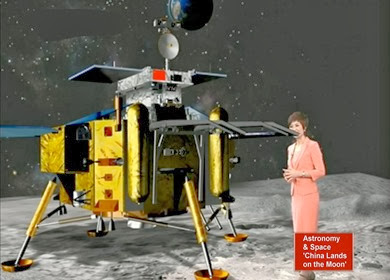 Let’s take a look back at China’s Moon programme.
Let’s take a look back at China’s Moon programme.
China's lunar mission is divided into three stages: orbiting, landing, and return. The following is the timeline of China's Luna mission development.
1998 Commission for Science, Technology and Industry for National Defence (COSTIND) begins planning the lunar mission, tackling major scientific and technological problems;
2004 January - lunar orbiter project is formally established;
February - mission is named "Project Chang'e" after a mythical Chinese goddess who flew to the moon;
2007 Oct. 24 - Chang'e-1 is successfully launched;
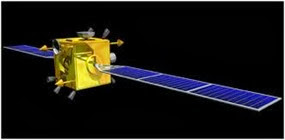 Nov. 7 - Chang'e-1 enters lunar orbit;
Nov. 7 - Chang'e-1 enters lunar orbit;
Nov. 26 - a clip of the voice of the probe and a Chinese song "Ode to the Motherland" are sent back from orbit. China's first picture of the lunar surface is published by Xinhua News Agency;
2008 Jan. 31 - COSTIND publishes the first picture of the lunar polar region taken by Chang'e-1;
October - the State Council, China's Cabinet, approves the Chang'e-2 mission;
Nov. 12 - based on data collected by Chang'e-1, the first lunar hologram with a resolution of 7 meters is published;
2009 March 1 - Chang'e-1 impacts the moon under control;
2010 Oct. 1 - Chang'e-2 is sent into space aboard a Long March-3C carrier rocket from southwest China's Xichang satellite launch centre;

Oct. 26 - Chang'e-2 enters lower, elliptical orbit; prepares to photograph Sinus Iridium;
Oct. 29 - Chang'e-2 photographs Sinus Iridium and returns to a higher orbit;
Nov. 8 - pictures of Sinus Iridium published by the State Administration for Science, Technology and Industry for National Defence (SASTIND);
2011 April 1 - Chang'e-2 completes all six engineering objectives and four scientific missions. Its design lifetime expires;
April to the end of May - Chang'e-2 surveys south and north poles of the moon, and takes high-resolution pictures of the chosen landing site for Chang'e-3;
Aug. 25 - For the first time in history, from lunar orbit a space craft enters the second Lagrange Point (L2) orbit, where gravity of the sun and Earth balance the orbital motion of the satellite;
2012 Feb. 6 - SASTIND publishes a lunar hologram with a resolution of 7 meters;
Dec. 13 - Chang'e-2 arrives in deep space 7 million km away from Earth, and surveys the Tout asteroid;
Present Chang'e-2 is 60 million km away from Earth and has become China's first man-made asteroid in the solar system. It continues flying into deeper space.
27 Dec 2013
Happy New Year everyone
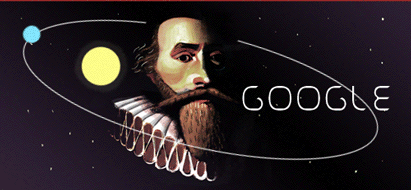
Finally finished January’s programme ‘China lands on the Moon.’ It is 40m long. It was challenging to obtain the video sequences and copyright permission. I acknowledge the help of Alan Simpson of the BBC for technical advice, Kevin Adams for his lovely music, NASA and CNTV.
This then is my contribution the BBC’s Astronomy Live Events around the country. I seem to have missed Christmas this year, all I need now is Dr Who to give me a lift in his Tardis to December 23rd….
31 Oct 2013
November 2013 | Radio astronomy
Since this programme was first aired on 31st October it has been seen by over 149,226 viewers.
In addition there were over 5,000 viewers on EuTube which closed down on new year’s day.
Eighty Two years ago American astronomer Karl Jansky constructed the world's first radio telescope and discovered radio waves coming from the Milky Way, which paved the way for a new branch of astronomical research. Last month the final antenna for the Large Millimetre/sub millimetre Array (ALMA) project was handed over to the observatory by the European AEM Consortium to complete the world's largest radio telescope complex in Chile. Therefore In this month's programme, our main theme is radio astronomy.
We also take a look at the highlights for November including a total eclipse of the Sun, on November 3rd, the Leonid meteors, and the latest news about comet ISON. You may also wish to try and glimpse the Ashen light on the night side of the planet Venus.
29 Oct 2013
1 Oct 2013
October 2013 | Voyager 1 at the edge of space
In September NASA officially confirmed that the Voyager 1 spacecraft entered interstellar space beyond our solar system in August 2012 when it became the furthest man made object to do so. In this program we take a look at what this actually means.
We also look at the highlights of the October night sky, and with Messier marathon season about to begin we pinpoint several deep sky objects for you to observe. Finally we have the latest news about comet ISON, and nova V339 DELPHINI which flared up in August, and is now getting brighter!
1 Aug 2013
August 2013 | The realm of comets
Hello and welcome to Astronomy & Space. In this program we take a look at the highlights of the August night sky.The maximum of the Perseid meteor shower takes place on the night of August 11th which are associated with comet Swift-Tuttle, and comet ISON looks like it will be a great sight in the December night sky. Our main theme is therefore the Realm of Comets.
1 Jul 2013
July 2013 | Gaia journey to the stars
GAIA is set to launch on December 19th.
In this program first broadcast in July our main theme is the Milky Way.
In recent news it is now estimated that there are 60 billion stars with extra solar planets in our Milky Way, and there are 100 billion stars in our galaxy. In this week’s program we highlight the European Space Agency’s new mission GAIA which is to launch soon atop of a Russian rocket to study the stars of our Milky Way in extra fine detail.

 Building homes on the MOON: Robots could one day 3D print an astronaut base on our rocky satellite | Mail Online
Building homes on the MOON: Robots could one day 3D print an astronaut base on our rocky satellite | Mail Online The experts behind Gaia's arrival at nothingness / Operations / Our Activities / ESA
The experts behind Gaia's arrival at nothingness / Operations / Our Activities / ESA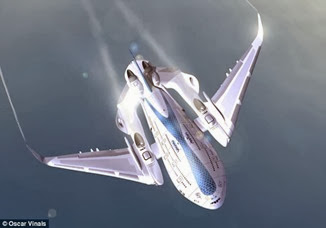 Three-storey Sky Whale fits 755 passengers, has virtual reality windows and self-healing wings | Mail Online
Three-storey Sky Whale fits 755 passengers, has virtual reality windows and self-healing wings | Mail Online Scientists plan to recreate a DYING STAR on Earth to learn more about red giants | Mail Online
Scientists plan to recreate a DYING STAR on Earth to learn more about red giants | Mail Online

 Scientists discover group of 'hypervelocity' stars travelling so fast they could escape the Milky Way's gravitational clutches | Mail Online
Scientists discover group of 'hypervelocity' stars travelling so fast they could escape the Milky Way's gravitational clutches | Mail Online

